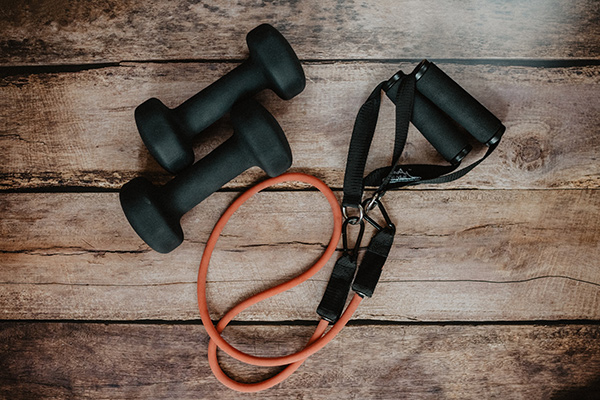Health And Wellness
Tips and tricks for home-based exercise
Jane Yardley - 23 November 2020

Professor Jane Yardley offers a few easily accessible exercise resources, including inexpensive resistance bands and Google searches, to help keep you active during the COVID-19 pandemic. (Photo: Kelly Sikkema on Unsplash)
According to some figures, home fitness equipment sales have almost tripled since the COVID-19 pandemic declaration. However, not everyone wants to invest the money and space required for an exercise bike, a treadmill or some weights that they might use occasionally throughout the pandemic, and rarely thereafter. Fortunately, there are many ways to be active at home with minimal financial investment and space requirements. Here are a few options:
1) Resistance bands: these elasticated bands come in a range of colours, each indicating a different amount of resistance. Exercises can be performed seated or standing. Bands can be combined to increase the amount of resistance and resistance band workouts can be adapted to any fitness level. A quick Google search with the terms “resistance band workout” (selecting the “videos” option) will provide thousands of free videos from which to choose.
2) Bodyweight exercises: regardless of your fitness level, it is possible to obtain a full-body strength and/or cardio workout using only your body weight. If you think of some of the things you did for fun as a child (skipping, crab walking, dancing, etc.), these can all be used in an at-home, bodyweight-only workout. Google is again your friend, with the search terms “bodyweight workout”. If you think that you’re too heavy for this, think again. Including the words “plus-size” in that search will result in thousands of free instructional videos showing how to modify bodyweight exercises for all shapes and sizes.
3) Make it a family event: are you caring for young children at home? Great. Instead of putting weights in your hands or on your shoulders to do some squats or lunges, give your son or daughter a piggyback with lots of deep knee bends. Parents, challenge your children to a wheelbarrow or crab walk race or get into some really intense shadow boxing, sound effects, and all. Turn on some tunes and have a family dance party in your living room. If you want more ideas, a “fun family home workout” search in Google will provide you with all that you need (also for free!).
If motivation has been a problem throughout the pandemic, keep in mind that regular moderate-to-vigorous physical activity enhances the immune system’s ability to fight off infection. It also improves overall mental health and well-being (which is known to decline during pandemic restrictions) and helps prevent some of the health conditions that lead to worse outcomes should you encounter COVID-19. Finally, exercise increases your brain’s ability to focus and be productive. Remember that physical activity accumulated in small bouts throughout the day is just as good for your health as a longer, continuous workout. So, take the time to move daily—your body and brain will thank you.
Jane Yardley, Physical Education, Augustana Campus, University of Alberta. This column was originally published in the Camrose Booster on November 10, 2020.